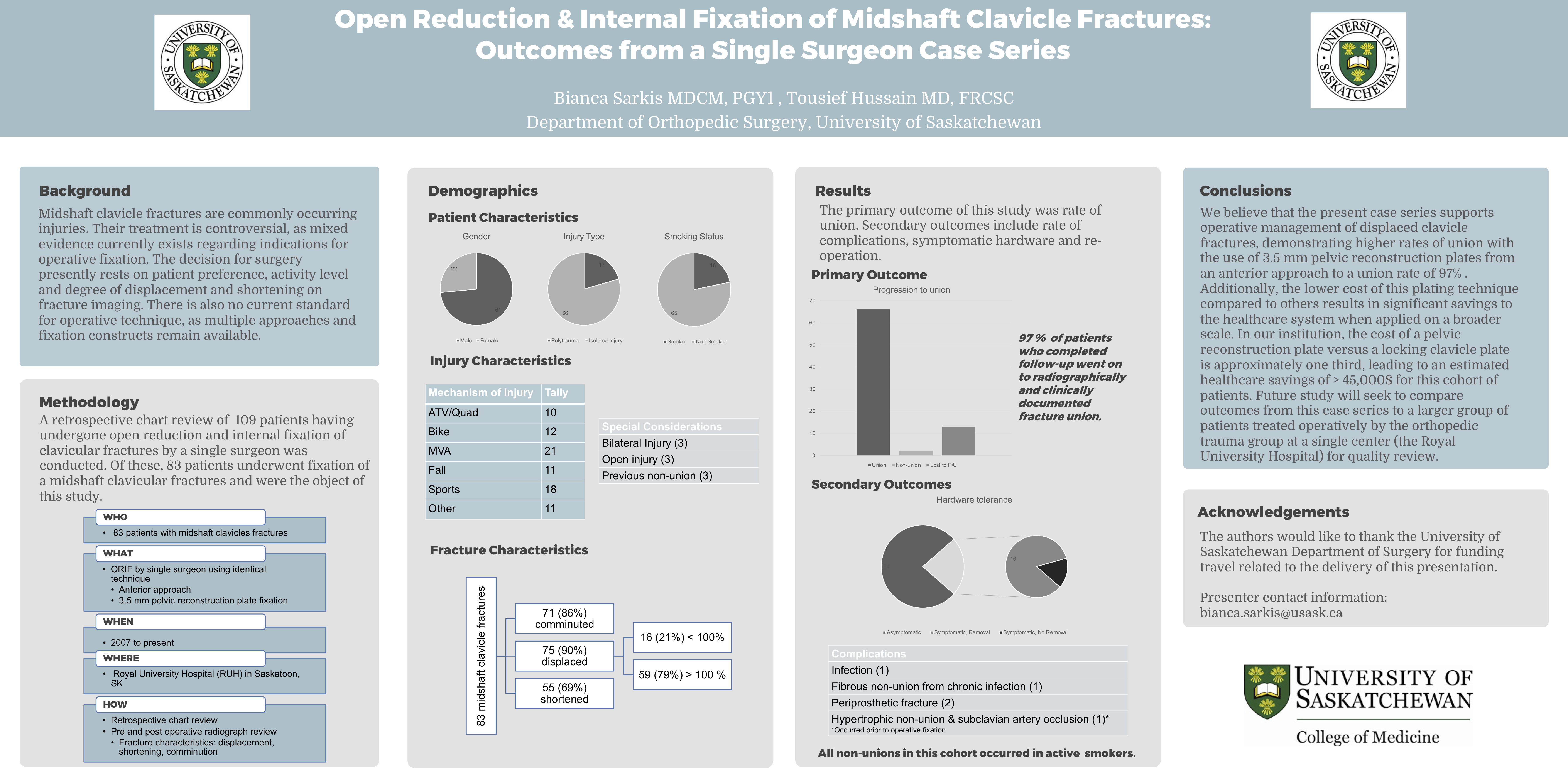
A2.5: Open Reduction & Internal Fixation of Midshaft Clavicle Fractures: Outcomes from a Single Surgeon Case Series
Bianca Sarkis, Tousief Hussain
INTRODUCTION: Midshaft clavicle fractures are commonly occurring injuries. Their treatment is controversial, as mixed evidence currently exists regarding indications for operative fixation. The decision for surgery presently rests on patient preference, activity level and degree of displacement and shortening on fracture imaging. There is also no current standard for operative technique, as multiple approaches and fixation constructs remain available.
METHODS: Eighty-three patients were treated operatively for midshaft clavicle fractures by a single surgeon using identical operative technique and approach from 2007 to present. In each case, an anterior approach to the clavicle and a 3.5 mm pelvic reconstruction plate were used to achieve fixation. The patients' individual charts and radiographs both preoperatively and post-operatively were retrospectively reviewed.
RESULTS: The primary outcome studied was rate of union. Of the 66 patients who had completed follow-up, 64 (97%) went on to radiographic union. Three patients had uncomplicated post-operative courses with limited radiographic followup, two patients went on to non-union and ten patients were lost to follow-up entirely. Secondary outcomes studied included rate of complications, symptomatic hardware and re-operation. Documented complications were two infections, two non-unions, and two periprosthetic fractures. Outcomes were stratified based on radiographic fracture characteristics, patient demographics, and mechanism of injury (polytrauma versus isolated injury).
DISCUSSION AND CONCLUSION: We believe that the present case series supports operative management of displaced midshaft clavicle fractures, demonstrating high rates of union with the use of 3.5 mm pelvic reconstruction plates from an anterior approach. Additionally, the lower cost of this plating technique compared to others (at our institution, approximately one third of the cost) results in significant savings to the healthcare system when applied on a broader scale. Future study will seek to compare outcomes from this case series to a larger group of patients treated operatively by the orthopaedic trauma group using various fixation methods at a single centre (the Royal University Hospital) for quality assurance review.
